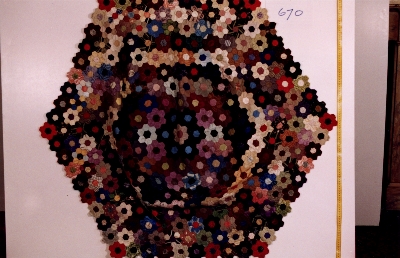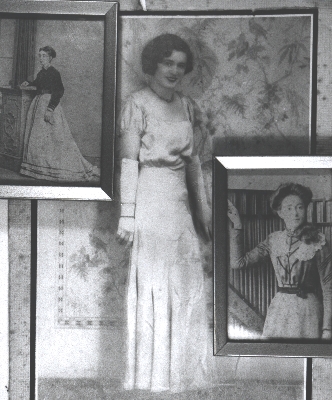Quilt No.381FB - Fay Burgess

1370 x 1220mm
Eliza Hillyard commenced the cover in England pre 1914. It was brought to Australia in 1914 when Eliza's daughter Ellen and her husband Tom (Thomas Montague Page-Knight) emigrated with their 4 children, Alice Maude, Vera, Beatrice Lucy and Charles Arthur. Ellen added rows of velvet and silk hexagons to Eliza's work. Ellen's daughter, Alice Maude , continued the work adding additional rows of hexagons. These are now the outer layer and still have some basting threads and papers in place. It is thought that Maude's work was in the 1930s and 1940s. The present owner, Fay Burgess, was given the work by her aunt Maude (Keage). Fay is the daughter of Vera May McGeachan (born Knight).
Eliza Worth (later Hillyard) b. 1886 was a needlewoman to Queen Victoria, mending linen. Her daughter Ellen (later Knight) made corsets and it is thought that some of the silk hexagons were from off cuts of corsets. Maude, born 1911, had a business as a dressmaker and made dresses for women married at Elizabeth Bay House in Sydney.
The present owner has a basket of pieces from the quilt and also Eliza's work bag with her initials embroidered on it.

Related Quilts:
2160 x 1524mm
1220 x 763mm
2743 x 2439mm
2000 x 2000mm
3049 x 2109mm
2530 x 1640mm






